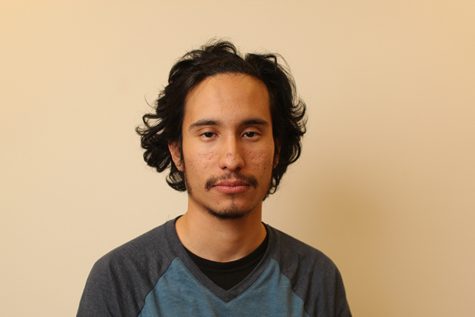Enrollment trend affects funding
Sep 2, 2015
When jobs are plentiful, students are not.
Student head count enrollment numbers have been steadily decreasing for the past five years beginning in the fall semester, reflecting the amount of Full-Time Equivalent Student (FTES) apportioned funding provided by the state.
This workload measure is used to fund public colleges and one FTES is the equivalent of one student enrolled in 15 semester units, or multiple students enrolled in a combined 15-unit semester.
Admissions and Records Director Catherine Frost said that the FTES numbers are currently 1.4 percent behind last fall’s FTES numbers, but the end of term projection for FTES is also less.
“We’re now ahead of the end of term projection for FTES,” she said. “We have more students taking more units, which is good, but when the economy is doing good, the enrollment tends to decline.”
FTES for fall 2015 is 2,559 compared to the end of term projection, which is at 2,368.
As of Aug. 31, the enrollment report for fall 2015 from the Contra Costa Community College District’s research office shows a head count number of 6,644, down 4.2 percent or 293 students from fall 2014.
Frost said, “We do have more students taking full-time loads. FTES growth is happening with (fewer) students, which means their average number of units is higher.”
“Our head count does grow because of late start classes and we have different start dates all the time — people start those later since it’s usually not too late to register.”
Frost said one example is the English as Second Language classes, which the majority of begin on Sept. 1.
“What the college seeks are students who want to enroll full-time, and that is the best relation between increasing enrollment and higher FTES funding,” Frost said. “It is better to have fewer full-time students than to have more part-time students.”
According to the student enrollment status summary report from the California Community Colleges Chancellor’s Office, the head count number for fall 2010 was listed at 8,413.
It proceeded to drop every following fall semester by at a least couple hundred students— fall 2011 at 7,949, fall 2012 at 7,263, fall 2013 at 7,028 and last year’s count of 6,937.
Interim President Mojdeh Mehdizadeh said, “Head count numbers change by the day and in the midst of the adding period, it varies. We have increased course sections and we won’t really know (accurate head count numbers) until the add period is over.”
She said, “There’s an increase from the beginning of the semester up until the census date and from the census to the final date for the semester it shows (a pattern of decline).”
She said there are specific formulas for how to calculate FTES funding based on each accounting method used for weekly census, daily census and positive attendance courses.
CCCCD Director of Communications and Community Relations Tim Leong said that one of the caveats of fluctuating enrollment, is positive attendance classes.
Positive attendance classes have varied meeting days and times. They could be 18 weeks or less, but what separates them from other courses is that they do not meet on the same day and time each week, Mehdizadeh said.
“For these sections, faculty have to keep track of the exact hours that each student attended the class and at the end of the term when grades are entered, faculty must also list the total number of hours that each student attended,” she said.
Leong said, “The difference in enrollment numbers could be less and we don’t know how many students tend to stay, but the historical (pattern) at CCC is that the enrollment numbers do get smaller and smaller.”


